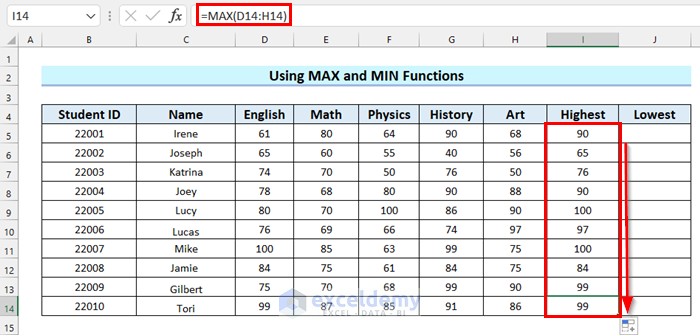5 Easy Steps to Make an Excel Answer Sheet

Creating an Excel answer sheet is an efficient way to design educational tools, conduct quizzes, or manage assessments. Excel, a versatile tool from Microsoft, offers a structured layout perfect for organizing data in a comprehensible manner. This guide will walk you through the process of making your own Excel answer sheet, whether for school, work, or personal use.
1. Set Up Your Worksheet

Begin by launching Microsoft Excel on your computer. Create a new blank workbook and focus on the first sheet. Here’s how to set it up:
- Adjust Column Widths: Click on the column header (e.g., A, B, C) and drag to make them wider or use the right-click menu to “Column Width.”
- Freeze Top Row or Columns: For better navigation when scrolling, you might want to freeze panes. Go to “View” > “Freeze Panes.”
- Rename the Sheet: Right-click on the sheet name at the bottom and choose “Rename” for easier identification.
Here’s an example of how your sheet might look:
| Student ID | Name | Question 1 | Question 2 | Question 3 |
|---|---|---|---|---|
| 1001 | John Smith | |||
| 1002 | Emma Brown |

💡 Note: Remember to adjust the number of columns and rows as per your requirement for the number of questions and students.
2. Enter Questions and Answers

To structure your answer sheet:
- Add Question Rows: Below the student names, start by entering your questions one per row, using headers like “Question 1,” “Question 2,” etc.
- Input Answer Options: For multiple-choice questions, list possible answers in cells adjacent to the question. If it’s a fill-in-the-blank or short answer, leave space for responses.
- Use Formatting:
- Make questions bold for clarity.
- Use a different color for answers or options.
3. Implement Data Validation

Excel’s Data Validation feature is crucial for ensuring correct input:
- Go to Data > Data Validation and select “List” from the Allow menu.
- Input your options into the “Source” field, like “A,B,C,D.”
- Customize error messages or input messages to guide users.
Here’s how to implement data validation:
- Select the cells where answers should be entered.
- Go to “Data” > “Data Validation.”
- Choose “List” for the “Allow” box.
- Enter your options in the “Source” box, separated by commas. For example, if your options are A, B, C, and D, you would write “A,B,C,D.”
- Optionally, customize the error alerts to give feedback when incorrect data is entered.
⚙️ Note: Data Validation ensures answers fit your criteria, helping maintain consistency in responses.
4. Format for Readability

A well-formatted answer sheet improves usability:
- Use conditional formatting to highlight correct or incorrect answers. Go to “Home” > “Conditional Formatting” > “New Rule.”
- Align cells to center the text for a neat look.
- Consider adding borders to separate sections visually.
- Use different fonts or font sizes to distinguish between different types of content.

5. Auto Grading Features

To make the grading process efficient:
- Create a Hidden Answer Sheet: Use a separate tab or hidden columns to store correct answers.
- Use Formulas: In another column, compare the student’s answer with the correct one. A simple formula could be
=IF(A2=“A”, “Correct”, “Incorrect”), assuming “A” is the correct answer. - Count Correct Answers: Sum the number of correct responses using COUNTIF or similar functions.
- Apply Conditional Formatting: Highlight correct or incorrect answers with colors for easy identification.
🔑 Note: For more complex answer sheets, consider using VLOOKUP or INDEX MATCH for dynamic grading based on varying correct answers.
In summary, creating an Excel answer sheet involves setting up your workbook, entering questions and answers, using data validation, formatting for readability, and optionally incorporating auto-grading features. This method not only simplifies the process of conducting assessments but also enhances the accuracy and efficiency of grading. Whether you're in education, training, or any field requiring assessments, Excel's versatility makes it an indispensable tool for creating dynamic, organized, and effective answer sheets.
Can I share my Excel answer sheet online?

+
Yes, you can share your Excel file through OneDrive, Google Drive, or by converting it to a PDF for distribution. Just ensure all the necessary permissions are set correctly if sharing via cloud services.
How can I make sure my answer sheet is accessible for people with disabilities?

+
Excel has built-in accessibility features like adding alternative text to images, ensuring high contrast, and using descriptive headers. Also, consider using features like “Check Accessibility” under the “Review” tab to identify and fix potential accessibility issues.
What if my answers include multiple correct options?

+
You can either expand the data validation list to include all possible correct answers or set up your formula to check if the student’s answer includes any of the correct options. For instance, using an OR function within an IF statement.



